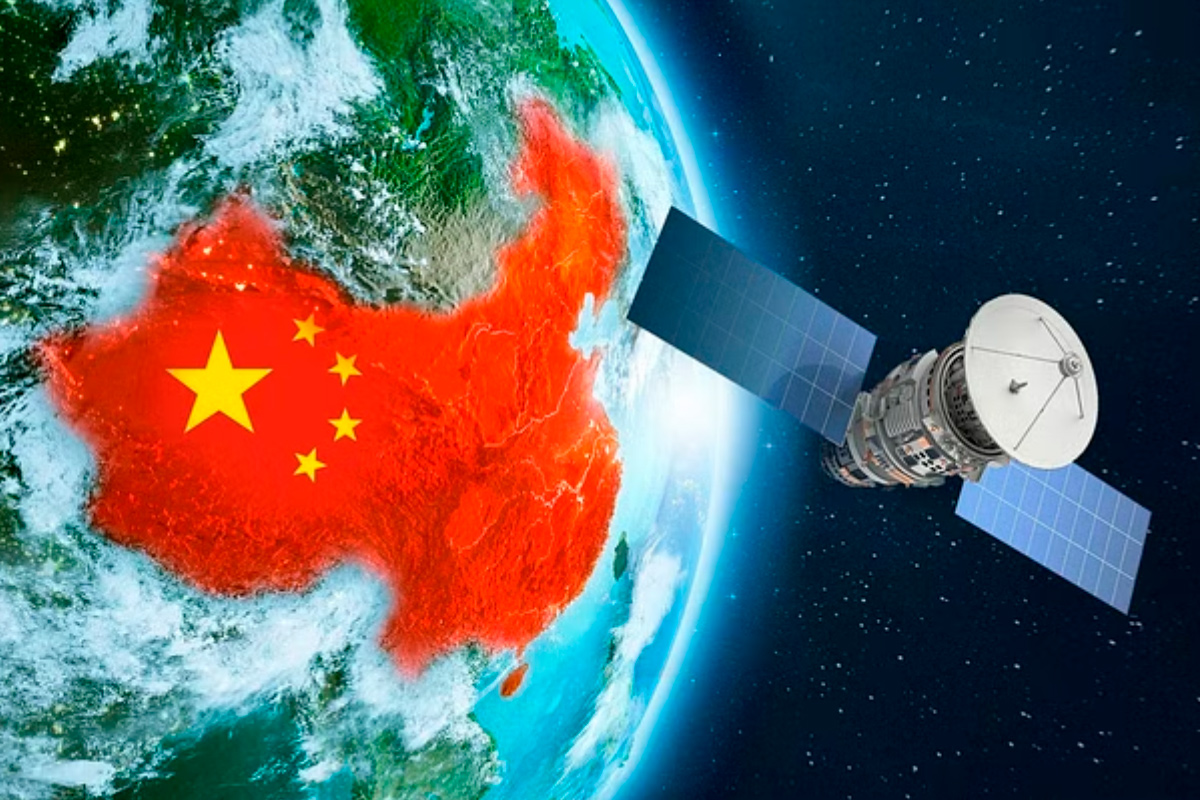A paper says that China needs to “adopt a combination of soft and hard kill methods to disable Starlink.”
In a paper published in April, Chinese military researchers said that China needs to develop the capacity to detect and destroy SpaceX’s Starlink satellites.
The study, led by Beijing Institute of Tracking and Telecommunications researcher Ren Yuanzhen, was published in the Chinese peer reviewed journal, Modern Defence Technology.
Before it disappeared, former US diplomat David Cowhig was able to translate the paper in its entirety, revealing a series of countermeasures recommended against Starlink.
The paper says that China needs to “adopt a combination of soft and hard kill methods to disable some of the Starlink satellites and destroy the constellation’s operating system.”
Real Quick, What’s Starlink?
Starlink is SpaceX’s satellite internet constellation, which aims to provide low-cost internet to remote locations. The service, the largest of its kind, already has 2,146 satellites in low Earth orbit.
SpaceX hopes to have as many as 12,000 satellites in its Starlink constellation in the next five years and eventually build up to 42,000.
The company says that while most satellite internet services come from single geostationary satellites that orbit the planet at about 35,000 km, Starlink satellites orbit much closer to Earth, at about 550 km, reducing signal latency.
Though satellite internet is typically slower than traditional broadband, it’s advantage lies in the fact that it can be easily accessed, even in remote locations which do not have cable or cellular towers.
Why is China Wary of Starlink?
To answer this question, it’s worth looking at an opinion piece titled ‘Starlink’s Expansion, Military Ambitions Alert World’ which was published this month in China Military Online, the official news portal of the Chinese military.
The author, Li Xiaoli, insisted that Starlink’s “unchecked expansion” and SpaceX’s “ambition to use it for military purposes” should ring alarm bells internationally.
Starlink’s Use in Ukraine
Xiaoli pointed to the use of Starlink in Ukraine, where over 10,000 Starlink terminals have been delivered with the help of the United States government.
“In addition to supporting communication, Starlink, as experts estimated, could also interact with UAVs and, using big data and facial recognition technology, might have already played a part in Ukraine’s military operations against Russia,” he said.
In addition to the vast cost of, and questionable demand for, Starlink weighing on SpaceX’s future, the company must also contend with mounting political and diplomatic risk.
Separately, Reuters reported that Ukraine’s defence ministry is using US-based Clearview AI’s facial recognition technology, potentially allowing authorities to vet people at checkpoints, unmask Russian assailants, combat misinformation, and identify the dead.
It is unclear, however, whether this technology was used in tandem with Starlink.
‘A Strong Military Background’
Xiaoli wrote that Starlink has a “strong military background” since the US Air Force has been conducting tests with it since 2018 to provide low latency, high bandwidth internet to its planes.
In 2020, SpaceX won a $150-million contract to develop military-use satellites and signed an agreement with the US Army, letting it use Starlink’s broadband to transmit data across military networks, Space News reported.
“When completed, Starlink satellites can be mounted with reconnaissance, navigation, and meteorological devices to further enhance the US military’s combat capability in such areas as reconnaissance remote sensing, communications relay, navigation and positioning, attack and collision, and space sheltering,” Xiaoli wrote.
Yuanzhen’s paper also noted that, in its patent filing in 2017, Starlink’s intended applications included satellite communication and transmission, satellite imaging, remote sensing, and other services, “implying great potential for combat information support and other services.”
A Net Around the Globe
Another reason why China takes issue with Starlink is because of it plans to take up most of the low Earth orbit.
“The LEO is able to accommodate about 50,000 satellites, over 80 percent of which would be taken by Starlink if the program were to launch 42,000 satellites as it has planned,” Xiaoli.







